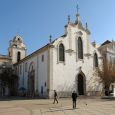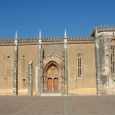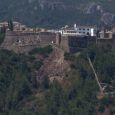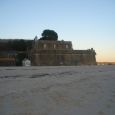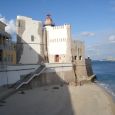Setubal
Advertisement
By train
You can access Setúbal by trains from Lisbon, and most towns in the surrounding area. You also have lots of trains from anywhere to Lisbon, if there is not a direct train to Setúbal, you might want to consider getting one to Lisbon, and then to Setúbal.
By boat
The troia is a peninsula near Setúbal, and that is probably the only way to commercially reach Setúbal by boat.
By car
It shouldn't be a problem to find your way, Setubal is a major town in the area, so, if you are around, you will have signs to point out your way.
By bus
There are buses that serve from Lisbon to Setúbal everyday and almost every hour a day, if you're in the capital it won't be a problem. There are also buses that serve the surrounding area towns.
St. Julian's Church
The Igreja de Sao Juliao (St. Julian's Church) is a 18th century church located on the Praça de Bocage in Setúbal, Portugal. It is the main church (Matriz) of the city.The Church of São Julião was originally built in the second half of the 13th century. According to tradition, it was sponsored by the fishermen of Setúbal. It is known that, at the end of the 15th century, the church was connected to the Palace of Jorge de Lencastre, Master of the Order of Santiago and Duke of Aveiro. The Duke used the Church of São Julião as his private chapel until around 1510.
Monastery of Jesus of Setubal
The Monastery of Jesus is a historical religious building in Setúbal, Portugal. It is one of the first buildings in the Manueline style, the Portuguese version of late Gothic. The cloisters of the convent houses the museum of the Monastery.The Monastery of Jesus was founded around 1490 outside the city walls of Setúbal by Justa Rodrigues Pereira, a noblewoman of the Portuguese royal court. After 1491, King John II started sponsoring the building of the monastery, which he commissioned to Diogo de Boitaca, an architect of unknown origin, possibly French. After the death of John II in 1495, King Manuel I continued supporting the construction works.
Museum of Archaeology and Ethnography of Setubal
The Museum of Archaeology and Ethnography of Setúbal (MAEDS) is a museum Portuguese situated in Gauteng . The MAEDS was established in late 1974 by the District Council of Setubal, having opened in 1976 .The museum consists of two parts: the archaeological and ethnographic . In part the estate includes archaeological materials from archaeological sites pre-historic , from the Palaeolithic to the Iron Age and Roman . In part ethnography , the museum presents materials related to the activities of fishing , production of salt , agricultural , animal husbandry , spinning and weaving , handicrafts and rural and urban folk art.
Fort Santiago
Santiago Fort or Fort of the Outão Outão, located north of the bar Sado River , in Setúbal , in Portugal .Joined in the past, the defensive line the stretch of coastline called today, in terms of tourism , such as Riviera, and that in the seventeenth century , extending from Albarquel to Sesimbra , complementing the important population of the maritime defense of Setúbal .
Forte de Sao Filipe de
The Forte de Sao Filipe Setubal, also known as Castle of St. Philip, is located in a dominant position on a hill opposite the town of coastal Setúbal , dominating the left bank of the estuary of the River Sado and the Atlantic Ocean in Portugal .
Fort Albarquel
Albarquel The Fort is located on the beach of the same name, the bar north of the Sado River , in the County and District of Setubal in Portugal
Forte de Santa Maria da Arrabida
The Fort of Santa Maria or Fort Arrábida Arrábida is situated in the foothills of the southern slope of the mountain of the same name , the dominant southwest of Portinho Arrábida , bar north of the Sado River , in the district of Setubal in Portugal .Complements the set of eighteenth-century fortifications, built in the context of the war of Independence Restoration of Portugal, the coast stretching from Setubal to the Fort of St. Dominic's Shuffle , near the cable Espichel .
Fort St. Aloysius Gonzaga
The Fort of St. Aloysius Gonzaga, also known as Old Fort, located in a dominant position on a hill opposite the city of Setubal , dominating the left bank of the estuary of the River Sado and the Atlantic Ocean in Portugal .This fort was erected in the seventeenth century with traces of the military architect Luís Serrão Pimentel , to complement the defense of the town from the land. It is found in several plants of the old defense of the city of Setubal.
Information not available


